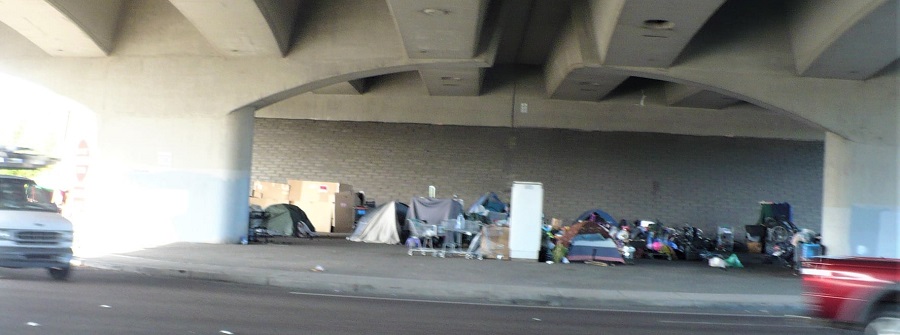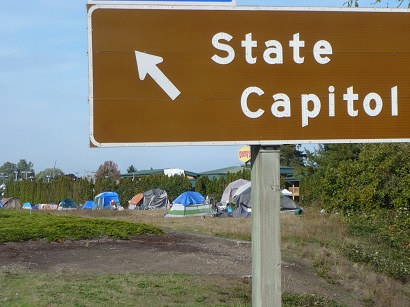“Respondents to the survey were not a random or representative samplingâ€
The City of Salem reported on a community survey developed by the City of Salem Human Rights Commission in partnership with Western Oregon University students as offering insight into Salem residents' experiences of discrimination. But, does it?
This year, 835 respondents completed the survey – about 3.8 times the number of respondents to the previous survey in 2017. Of those, 247 respondents came through the City of Salem's Facebook page, 222 came through a community organization, 87 came through friends or family, and 209 of Salem's unsheltered residents filled out paper surveys collected by students and community volunteers.
That may sound like a good representation, but is it a fair representation? Salem’s news release says: “Respondents to the survey were not a random or representative sampling of the community, so the voluntary responses suggest some level of interest in the topic.†The
report says: “The result is a non-probability judgment sample... The data in aggregate is not representative of the City of Salem overall…Historically marginalized groups are over-represented in this data set.â€
A D V E R T I S E M E N T

A D V E R T I S E M E N T
The idea that the conclusion that 26% of respondents said Salem had quite a bit of discrimination and another 30% said Salem has a lot of discrimination, can only be directly related to the 835 respondents and not the City of Salem. Even then, the report included those that “heard about†a discrimination experience. The survey does not define what constitutes a discrimination experience. However, 85% indicated discrimination over housing status, which was collected via paper survey of homeless. Next is 22% over race, which compared to the demographics showing 25% indicating a BIPOC race or ethnicity. Twenty-three percent responding identified as LGBTQIA+ and 18% reported discrimination over gender. Other categories were less than eight percent.
There are some hidden gems in the report. Respondents were given an opportunity to comment, which poses the question, did these samples of 12% actually experience discrimination or is it a taught feeling. "I routinely see discrimination both what appears intentional and more systemic or unintentional on a race basis by both private sector businesses and city government and local regional governing personnel, including the police." Additionally, another respondent stated they have a "Big concern about police & those in leadership, especially the school board. New to Oregon & shocked at its history of discrimination."
Another 17% commented mentioned "hate groups" and "white supremacy" when asked about their grade. For example, one respondent wrote, “We have a Proud Boys problem. I think many come from out of town to bully and intimidate people who don’t look or think as they do.†Another wrote, "White supremacy, overt and covert, is extremely prevalent in Salem. The area is conservative.†Which is it? Most of Salem residents probably think rioters come from out of town to cause problems, but does this qualify for a discrimination act?

The Commission said they stand ready to help with experiences of discrimination to provide feedback to the city. Can a commission “with experiences of discrimination†truly provide objective insights. They want to use their insights to improve outreach to the community and increase understanding of the perceptions of Salem residents. Their own report admits a bias that skews the data. It certainly does not indicate that residents of Salem lack an understanding or perception of discrimination among the unsheltered or otherwise.
One thing the report does expose is that 209 unsheltered people are not utilizing the Turnkey Project or nonprofit assistance. And perhaps the residents of Salem deserve an unbiased professional survey if the city is going to give creditability to the results.
--Donna Bleiler| Post Date: 2021-08-04 10:07:17 | Last Update: 2021-08-04 17:14:35 |








 The Commission said they stand ready to help with experiences of discrimination to provide feedback to the city. Can a commission “with experiences of discrimination†truly provide objective insights. They want to use their insights to improve outreach to the community and increase understanding of the perceptions of Salem residents. Their own report admits a bias that skews the data. It certainly does not indicate that residents of Salem lack an understanding or perception of discrimination among the unsheltered or otherwise.
The Commission said they stand ready to help with experiences of discrimination to provide feedback to the city. Can a commission “with experiences of discrimination†truly provide objective insights. They want to use their insights to improve outreach to the community and increase understanding of the perceptions of Salem residents. Their own report admits a bias that skews the data. It certainly does not indicate that residents of Salem lack an understanding or perception of discrimination among the unsheltered or otherwise.